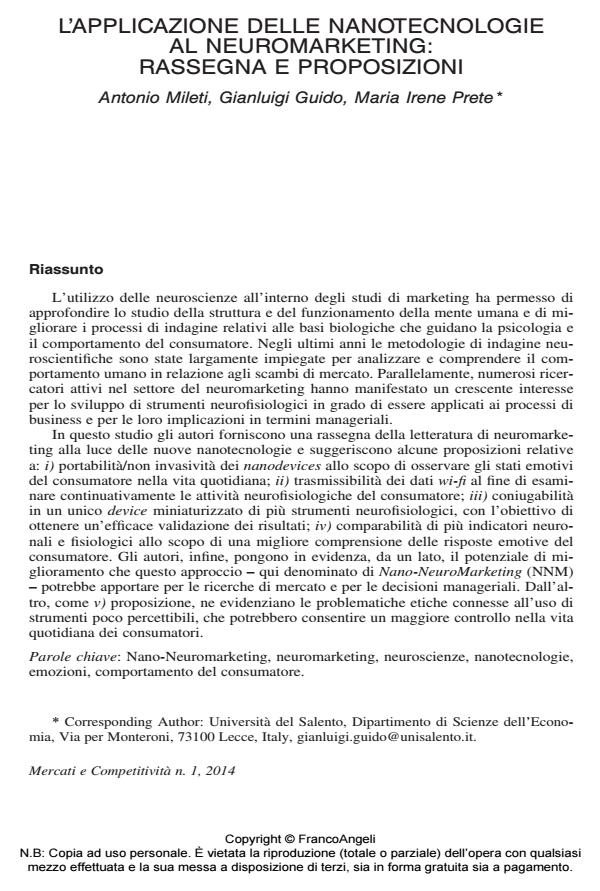Applying Nanotechnology to Neuromarketing. An Overview
Journal title MERCATI E COMPETITIVITÀ
Author/s Antonio Mileti, Gianluigi Guido, Maria Irene Prete
Publishing Year 2014 Issue 2014/1
Language Italian Pages 19 P. 17-35 File size 571 KB
DOI 10.3280/MC2014-001002
DOI is like a bar code for intellectual property: to have more infomation
click here
Below, you can see the article first page
If you want to buy this article in PDF format, you can do it, following the instructions to buy download credits

FrancoAngeli is member of Publishers International Linking Association, Inc (PILA), a not-for-profit association which run the CrossRef service enabling links to and from online scholarly content.
Neuroscience applied to marketing research refers to the use of the scientific knowledge on the function of the brain to the study the neurobiological source of consumer psychology e behaviour. Such neuroscientific methods have been in recent times applied to the study and understanding of human behaviour in relation to markets exchanges, as many researchers in the area of neuromarketing have revealed a growing interest in managerial and business neurophysiological devices. In this paper the authors provide an overview of the researches in neuromarketing, examined in the light of the recent nanotechnologies’ advancement. The authors also highlight the improving potential for market researches and for managers’ strategies of this new approach and underlines the ethical issues of this imperceptible nanodevices, which could allow a greater control of people’s daily routines.
Keywords: Nano-Neuromarketing, neuromarketing, neuroscience, nanotechnologies, emotions, consumer behavior.
Antonio Mileti, Gianluigi Guido, Maria Irene Prete, L’applicazione delle nanotecnologie al neuromarketing: rassegna e proposizioni in "MERCATI E COMPETITIVITÀ" 1/2014, pp 17-35, DOI: 10.3280/MC2014-001002